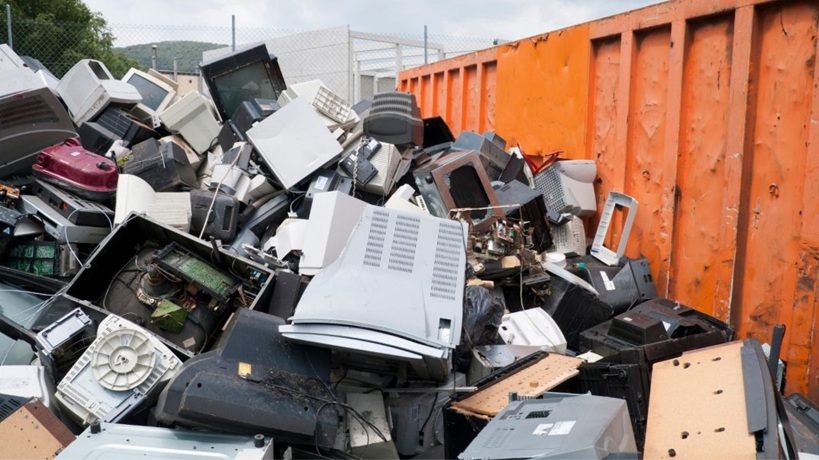E waste disposal Singapore has become a daily reality that most residents never think about until they stand in their flat, holding a broken laptop, wondering what to do next. In drawers and cupboards across this island nation, millions of dead phones, tangled charging cables, and obsolete gadgets accumulate like digital sediment. Yet behind this seemingly mundane problem lies a story of policy innovation, environmental justice, and how individual choices ripple through society.
Walk through any Housing Development Board estate, and you’ll find families grappling with the same dilemma. Mrs Chen in Ang Mo Kio has three old phones gathering dust, whilst Mr Kumar in Jurong keeps putting off disposing of his broken television. Their hesitation reflects a broader challenge: sixty per cent of Singapore residents simply don’t know how to properly recycle their electronic waste.
The Hidden Scale of Digital Discard
Singapore’s consumption patterns tell a stark story. Each person discards the equivalent of 73 mobile phones worth of electronic waste annually, contributing to 60,000 tonnes yearly. Singapore is the second-largest electronic waste producer in Southeast Asia, despite its small population.
What happens to discarded devices reveals the disconnect between policy and reality:
• Only 6% of electronic waste gets properly recycled
• 26% ends up thrown away with general rubbish
• 24% gets traded in or sold to informal collectors
• 35% of bulky items are carted away by delivery workers
• 9% gets donated to others
• The remainder disappears into informal networks
This pattern reveals more than poor disposal habits. It shows how formal systems often fail to match the rhythms and constraints of ordinary life.
The Workers Behind the Bins
Behind Singapore’s 600 electronic waste bins scattered across shopping centres and housing estates, workers deal with disposal consequences most residents never consider.
The bins become repositories for more than electronics. Workers spend considerable time sorting out packaging waste and rubbish that people dispose of incorrectly. “This creates a lot of pressure on manpower and resources,” facility operators note.
The human cost extends beyond Singapore’s borders. Improperly managed electronic waste often ends up in informal recycling operations in developing countries, where workers face toxic exposure without protection.
Policy Meets Reality on the Ground
Singapore’s Extended Producer Responsibility system, launched in July 2021, represents one of the world’s most ambitious attempts to reshape electronic waste disposal through policy. The framework shifts responsibility to manufacturers and retailers.
Electronics producers with outlets larger than 300 square metres must establish collection points and organise free collection services for end-of-life products. This makes the true cost of consumption visible.
Yet implementation reveals gaps between policy design and practice. The system covers major appliances and common electronics but excludes smaller items like rice cookers and medical devices, creating confusion for families trying to dispose responsibly.
The Geography of Disposal
Electronic waste disposal in Singapore follows predictable patterns that reflect broader inequalities. Residents in newer developments with better access to shopping centres find it easier to locate collection points. Those in older estates or on the periphery face longer journeys to dispose of items properly.
The uneven distribution of collection infrastructure means that informal disposal methods persist:
• Bulky items left in common areas of housing blocks
• Small electronics mixed with household rubbish
• Devices accumulating in homes due to disposal inconvenience
• Working electronics given away through informal networks
This geography matters because it shapes environmental outcomes. When proper disposal requires significant effort, people find workarounds that may not align with environmental goals.
Community Innovation and Repair Culture
Amidst these systemic challenges, grassroots initiatives offer alternative models. Community repair cafés like Repair Kopitiam bring volunteers together to extend the life of electronic devices rather than rushing toward disposal. These spaces represent more than environmental activism; they’re attempts to rebuild social connections around shared resources.
Edwin Beng, carrying his Ikea bag full of broken electronics to a repair session, represents a different approach to the disposal question. Instead of asking where things should go when they break, community repair initiatives ask how we might keep them working longer.
The Ripple Effects of Individual Choice
Every decision about electronic waste disposal sends ripples through multiple systems. When residents properly use designated collection points, they support formal recycling networks that can safely extract valuable materials like gold, silver, and rare earth elements. When devices end up in general waste, those materials are lost to incineration.
The economics are striking: Singapore’s electronic waste contains millions of dollars worth of recoverable materials that could reduce the need for virgin mining. Yet current low recycling rates mean this value literally goes up in smoke.
Looking Forward
The challenge of electronic waste disposal in Singapore reflects broader questions about how societies manage the consequences of technological progress. The city-state’s policy innovations offer a model for other places grappling with similar issues, but implementation requires ongoing attention to how formal systems interact with informal practices.
For residents like Mrs Chen and Mr Kumar, the path forward involves more than just knowing where the nearest collection bin is located. It requires systems that make proper disposal as convenient as the consumption that creates the waste in the first place. The success of any electronic waste management system ultimately depends on its ability to fit into the complex realities of daily life, making environmental responsibility both possible and practical.
As Singapore refines its approach to managing electronic waste, the lessons learned here will shape how other cities tackle the growing challenge of digital disposal. The ultimate measure of success won’t be found in policy documents but in the choices that millions of residents make each day when confronted with their own pile of obsolete electronics. In the end, effective systems for e waste disposal Singapore must work not just on paper, but in the lived experience of ordinary people trying to do the right thing.

